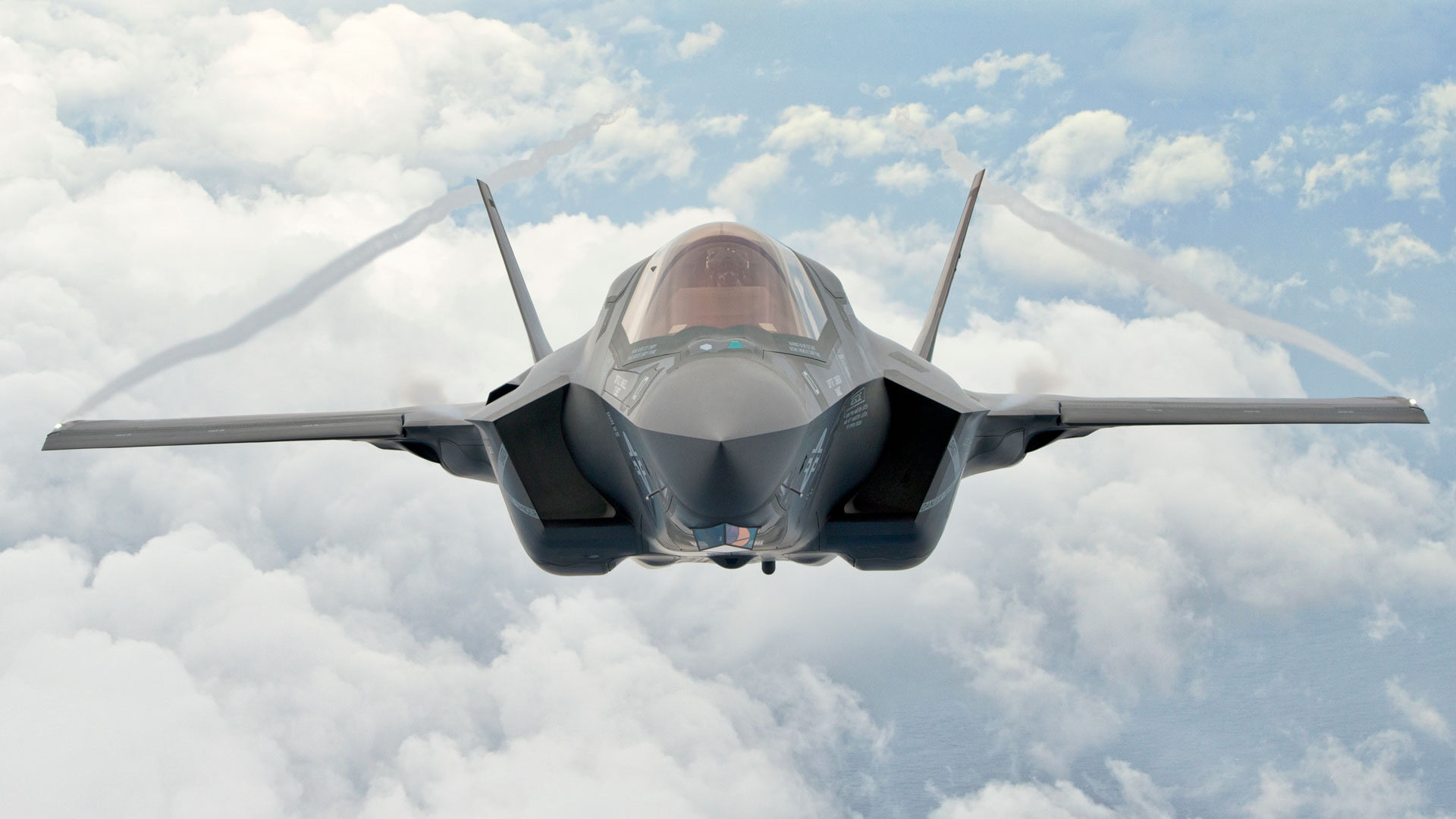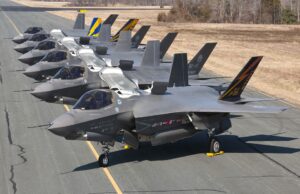
F-35 in flight. (File)
WASHINGTON: House and Senate lawmakers are headed for a clash over the Defense Department’s troubled F-35 Joint Strike Fighter program — with leading senators pushing the Air Force and Navy to buy more planes in fiscal 2022, while the just-passed House defense policy bill threatens cutbacks to service buys if the fighter’s enormous sustainment costs can not be wrestled down.
The markup of the Senate Armed Services Committee’s (SASC) fiscal 2022 National Defense Authorization Act (NDAA), released Sept. 22, would add $85 million to the Air Force’s $4.2 billion request to buy one additional F-35A (for a total of 49).
“The committee is concerned that, after repeated congressional plus-ups and support for increased production, the Air Force still budgets for a quantity below the stated production objectives of the F-35 program. Further, the committee is concerned that the Air Force has squandered an opportunity to capitalize on advanced procurement appropriations by only budgeting for 48 aircraft this year instead of the 60 aircraft that were planned and that the advanced procurement was previously provided for by the Congress. The committee expects the Department to execute proper forecasting and propose appropriate budget requests rather than to continue to rely on congressional plus-ups,” the report language chides.
SASC also adds a whopping $1.7 billion in order to upgrade the 338 aircraft the Air Force bought in Lots 1-13 to the Block 4 configuration with the technology refresh 3 hardware. Further, SASC put $175 million in new funds into the service’s budget to buy 20 F-135 power modules (engine components) to help deal with the ongoing engine shortage, fulfilling the request in the Air Force’s unfunded priorities wish list.
The committee further adds $535 million for an additional five F-35C carrier landing aircraft used by both the Navy and Marines; as well as $246.6 million to purchase additional spares and ground support for the Marine’s F-35B short take off and vertical landing variants.
Another $20 million in extra funds is included in the SASC NDAA for F-35 continuous capability and delivery effort (C2D2), for which the Air Force requested $985.4 million in Research, Development, Test, and Evaluation funds. “The committee supports the robust modernization program and investment in critical test assets and infrastructure to support the size and the scale of the F-35 fleet,” the report said.
But signaling frustration with DoD’s management of the JSF program, SASC would transition acquisition authority for the JSF from the DoD Joint Program Office to the Air Force and Navy departments no later than Oct. 1, 2027. The Pentagon is required to provide the Hill with a plan to do this by Oct. 1, 2022.

F-35B STOVL and F-35C carrier variants
House Ties Future Buys To ‘Affordability Targets’
The House, which passed its version of the 2022 NDAA on Sept. 24, would only slightly trim spending on the JSF program. (Overall, the language would cut the budget for F-35As by $194.1 million and the F-35C by $63.3 million, while keeping the F-35B stable.)
But more importantly, the House voted to cap service future buys based on affordability, via a calculation of the average cost-per-tail. The provision would force service budget planners to take into account the long-tail costs of sustaining the jets — a longstanding issue for the F-35 — in order to decide how many of the fighters they can afford to maintain.
In a July report, the Government Accountability Office found that DoD is looking at $1.27 trillion to operate and sustain the tri-service fleet over its lifespan — an estimate that has steadily increased since 2012. “The military services collectively face tens of billions of dollars in sustainment costs that they project will be unaffordable,” GAO said.
DoD did get a break from the original House Armed Services Committee markup language, however, in that the full House passed an amendment offered by Rep. Marc Veasey, D-Texas, that gives the services until 2028 to implement the affordability targets. It also allows the defense secretary to waive any caps based on the needs of Combatant Commanders.
Representatives also went in the opposite direction of their fellow lawmakers across Capitol Hill on the C2D2 effort, slashing the budget by $98.5 million rather than plussing it up.
Further, the House version of the bill prohibits the JPO from entering into a multi-year performance-based logistics (PBL) contract with prime contractor Lockheed Martin, until DoD can verify for two years in a row that sustainment cost targets for the services are met, and that the PBL would save money. This comes on the heels of the JPO granting a three-year interim sustainment contract worth up to $6.6 billion to the company, which the JPO characterized as laying the groundwork for a PBL.
Adaptive Engine Transition Program
While the two sides of Capitol Hill also differ on their approach to the potential acquisition of advanced engines for the F-35 fleet, the divide is less stark.
The SASC wants the JPO to acquire and integrate the technology developed under the Adaptive Engine Transition Program (AETP) as soon as possible; the House seems more concerned about ensuring a truly competitive contest for replacing the current Pratt & Whitney F135 engine used by all three services.
SASC encourages DoD “to transition this technology … into engineering and manufacturing development activities at the soonest opportunity. Fighter propulsion is one of the few areas in which the United States maintains a clear advantage over near-peer adversaries, specifically China and its threat to the Indo-Pacific region,” the report language explains.
The House NDAA calls for a report on how the Air Force can acquire and transition new engine tech into the F-35A by 2027, emphasizing the need for a “competitive acquisition strategy.” It also also asks the Navy department to report on how similar advanced propulsion technology could be integrated with the F-35C and F-35B models. It added $257 million for the effort.
JPO Director Lt. Gen. Eric Fick on Sept. 15 told reporters that new, higher-power engines will be required to make the F-35 Block 4 modernization fully capable, according to Air Force Magazine, but the current AETP designs are too big for the F-35C and especially the F-35B. Fick said that it would be unfair for the Navy and Marines to be asked to pay for an engine that could only equip the Air Force version of the jet. Both Pratt & Whitney and GE Aviation are developing AETP prototypes.
Of course, the defense policy bills do not actually set the final spending numbers for DoD — that is the purview of the powerful appropriations committees on both sides of Capitol Hill. Currently, it looks almost certain that DoD (and the entire US government) will be working under a Continuing Resolution for a number of months while Republicans and Democrats battle over spending.
Move over FARA: General Atomics pitching new Gray Eagle version for armed scout mission
General Atomics will also showcase its Mojave demonstrator for the first time during the Army Aviation Association of America conference in Denver, a company spokesman said.


























